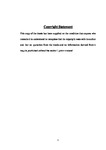Titanium dioxide nanoparticle uptake across the isolated perfused intestine of rainbow trout: physiological mechanisms and a comparison with Caco-2 cells
| dc.contributor.supervisor | Handy, Richard D | |
| dc.contributor.author | Al-Jubory, Aliaa Rasheed | |
| dc.contributor.other | School of Biological and Marine Sciences | en_US |
| dc.date.accessioned | 2013-07-29T13:43:15Z | |
| dc.date.available | 2013-07-29T13:43:15Z | |
| dc.date.issued | 2013 | |
| dc.date.issued | 2013 | |
| dc.identifier | 10178917 | en_US |
| dc.identifier.uri | http://hdl.handle.net/10026.1/1586 | |
| dc.description.abstract |
The wide use of nanoscale materials in food and health care products raises the concern of their possible uptake across the gastrointestinal tract, but very limited data are available on their uptake kinetics, and the potential hazards for humans. In this study, the uptake mechanism of titanium dioxide (TiO2) across the isolated perfused fish intestine and human intestinal Caco-2 cells were evaluated. The in vitro preparation of the whole gut sac and the isolated perfused intestine of rainbow trout were performed using both bulk and nano TiO2 in a concentration of 1 mg l-1 for up to 4 h. The results showed that the Ti from both bulk and TiO2 NPs were mainly accumulated in the mid and hind intestine, with 80% or more of the accumulation in the mucosa rather than the underlying muscularis. Perfused intestines showed a saturable, time-dependent accumulation of the Ti from TiO2 and the uptake of Ti from exposure to NPs was faster than that of the bulk form. The uptake of Ti from exposure to TiO2 NPs increases 10 fold when the CO2 in the gas mixture was lowered to 0.5%. Subsequently, further investigation on the mechanisms of uptake of TiO2 was applied using different kinds of inhibitors. Adding 10 mmol l-1 cyanide did not stop Ti uptake from TiO2 exposures, and 100 µmol l-1 vanadate (ATPase inhibitor) caused a 2.8 fold reduction in the net uptake rate of Ti for the TiO2 NP exposure. Luminal additions of 120 IU ml-1 nystatin (endocytosis inhibitor) blocked the uptake of Ti from both bulk and TiO2 NPs treatments. The results indicate that Ti accumulation from TiO2 exposures was sensitive to both nystatin and vanadate; the former suggesting that there is an endocytosis involvement in the uptake of TiO2 across the intestinal epithelium. Human intestinal Caco-2 cell showed a steady, saturable and time-dependent accumulation of Ti over 24 h exposures to 1 mg l-1 TiO2 (for all forms of TiO2). A scanning electron microscope study indicated the appearance of the particles underneath the cells, increasing the evidence of the Ti uptake from different forms of TiO2 by Caco-2 cells. Both nystatin and vanadate increase the accumulation of TiO2 which suggests interference of these drugs with endocytic pathways. All the data in the thesis demonstrates Ti uptake across the intestinal epithelium from TiO2 exposures involving CO2-dependent and nystatin-sensitive mechanisms. The results in this thesis have contributed to some understanding on the behaviour, uptake and effects of the TiO2 NPs across the intestine; and highlight the possible dietary hazard of the NPs to human health. | en_US |
| dc.description.sponsorship | Ministry of Higher Education and Scientific Research of Republic of Iraq. | en_US |
| dc.language.iso | en | en_US |
| dc.publisher | University of Plymouth | en_US |
| dc.subject | Titanium dioxide | |
| dc.subject | Uptake mechanism | |
| dc.subject | Endocytosis | |
| dc.subject | Gut epithelium | |
| dc.subject | Caco-2 cells | |
| dc.subject | Carbon dioxide | |
| dc.subject | Nanoparticles | en_US |
| dc.title | Titanium dioxide nanoparticle uptake across the isolated perfused intestine of rainbow trout: physiological mechanisms and a comparison with Caco-2 cells | en_US |
| dc.type | Thesis | |
| plymouth.version | Full version | en_US |
| dc.identifier.doi | http://dx.doi.org/10.24382/3801 |
Files in this item
This item appears in the following Collection(s)
-
01 Research Theses Main Collection
Research Theses Main


